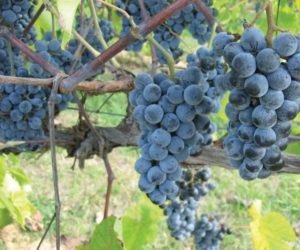Winemaker Kent Rosenblum of Rosenblum Cellars in Alameda, California goes back to his early roots by offering his thoughts on making Riesling. Back in 1973, he and his wife made their very first homemade batch – 5 gallons (19 L) of Reisling – officially launching them into the world of winemaking.
Tips on Riesling
In that first foray into making wine, Rosenblum says he took the grapes to another friend’s house in Oakland to use a small crusher and press to extract juice. His next concern was making sure conditions were right. Temperature control in home winemaking is an important element in fermentation. For the white Riesling, as with all white wines, fermentation takes place under cool conditions, about 40 to 45 °F (4 to 7 °C). During other steps such as racking, keep wine below room temperature.
Large wineries use temperature-controlled fermentation tanks, and once the wine is bottled it is stored in cool (typically 55 to 60 °F/13 to 16 °C) rooms or in caves. For the Rosenblums, the kitchen refrigerator was invaluable for fermentation and racking wine during their early days. While you can fill a bathtub or large bucket with ice, the temperature has to be constantly checked and adjusted. A separate refrigerator makes it easier to keep the temperature at a fairly even level because the door is opened and closed less frequently, he says. Keeping white wines, such as a Riesling, at 40 to 45 °F (4 to 7 °C) is important. He used the typical five-gallon (19-L) glass carboy, which he says takes up a lot of room in the refrigerator. A separate refrigerator also makes it easier for racking (siphoning off the lees, or settling), eliminating the need to rearrange food and other containers.
Once the grapes were crushed and pressed, separating the skins from the juice, Rosenblum says he put 50 parts per million of SO2 (sulfur dioxide) into the juice and let it settle for 24 hours in the refrigerator. Then he racked the container twice over a 48-hour period.
Fermentation
Rosenblum used a Champagne yeast to ferment the wine. The preferred yeast for a white Riesling, however, is a Prise de Mousse or Steinberg, mixed with a teaspoon of sugar and a teaspoon of water, Rosenblum says. Once the fermentation lock is secured, keep the carboy in the refrigerator at 45° F for about three months.
The slower the fermentation the better for a Riesling, Rosenblum says, but ideally the home winemaker will want to get the sugar level down to about 1.5 Brix.
The next step was deciding on whether he wanted a dry Riesling or a sweet Riesling. For a sweet Riesling, Rosenblum recommends adding 20 parts per million of SO2, which is usually in the form of potassium metabisulphite, which breaks down into CO2.
He then turned the refrigerator temperature down to about 38 to 40 °F (3 to 4 °C). The goal was to let the juice settle. He racked the container every two weeks until the juice was crystal clear.
The next step was bottling. The bottles, filters, and hoses used to siphon the wine and meter the CO2 into the bottle were sterilized by soaking in hot water (water that has been brought to the boil). Just before bottling, add 20 milligrams per liter of potassium metabisulphite to the five-gallon (19-L) container.
Rosenblum then siphoned the wine into the bottles previously sprayed with inert gas CO2 or, preferably, with N2 or argon. It is necessary to do this slowly, with the siphon hose inserted all the way to the bottom of the bottle. Keep the siphon hose at the bottom until the wine fills up the bottle to avoid oxidation.
Before corking soak the corks in hot water. Once the bottles are sealed, keep them in the refrigerator at 45 °F (7 °C) or less for another month. Some home winemakers may want to open a bottle sooner, but the idea is to let the wine settle. If there is yeast left in the wine, the wine will be a little fizzy, but it may add to the complexity of the wine. Rely on your own palate for making adjustments.







